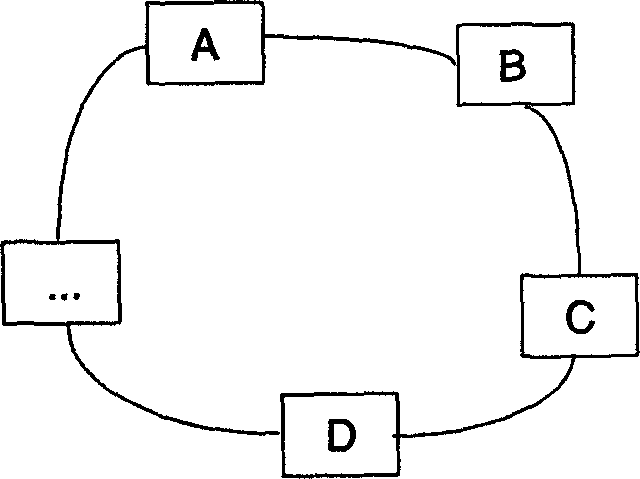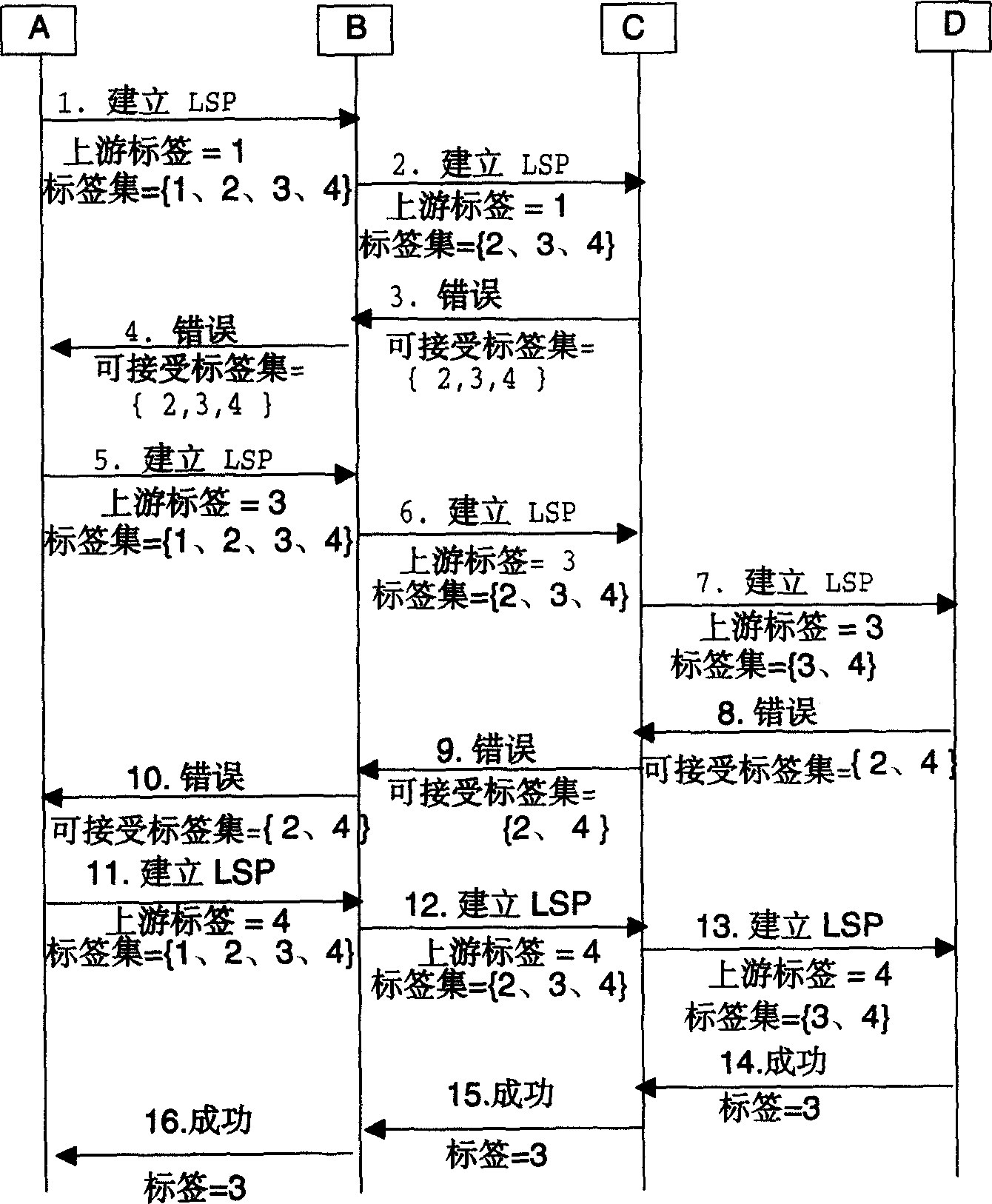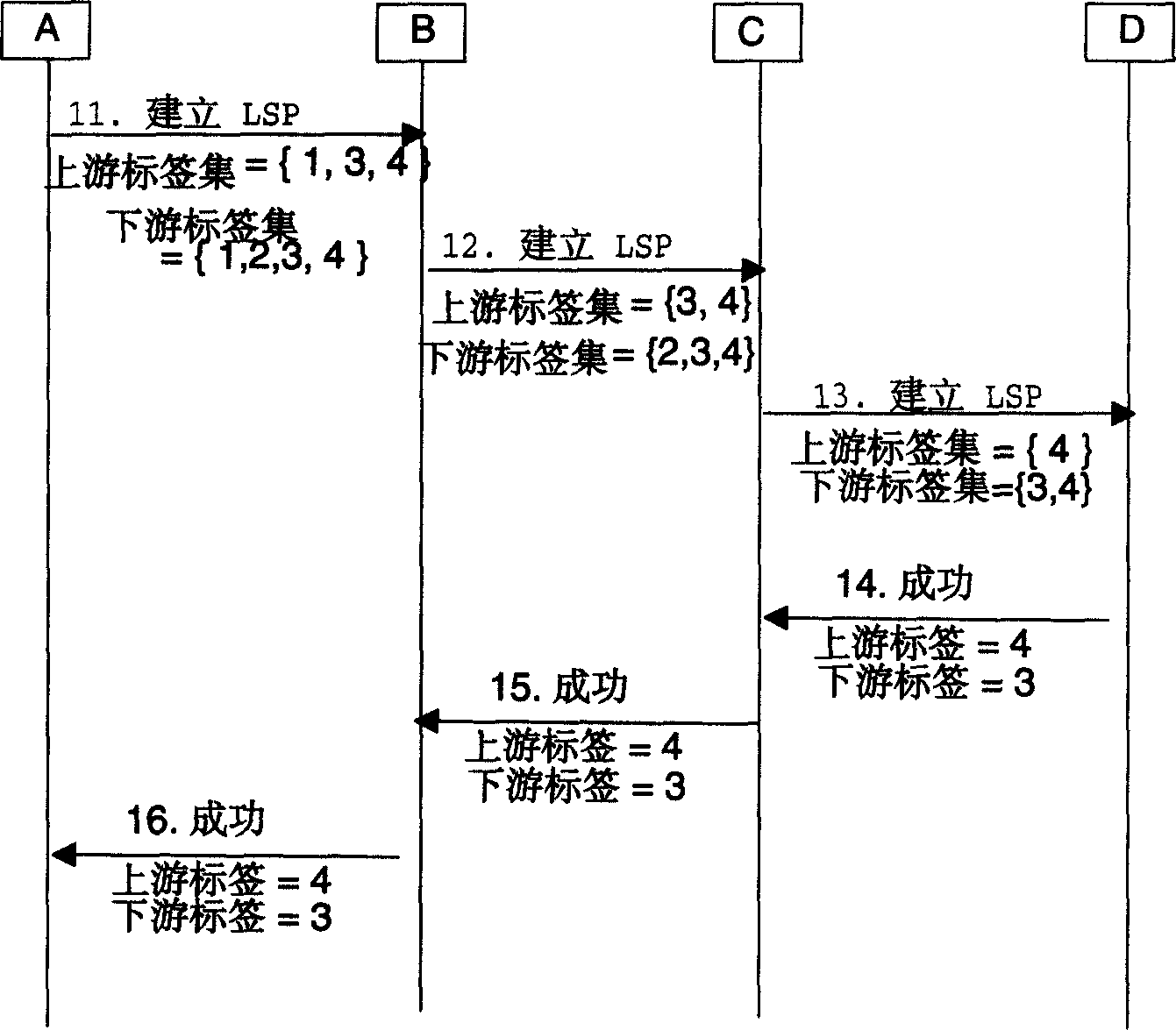Method for constructing bidirectional lable swap path in optical network
A label switching path and optical network technology, applied in the field of establishing a bidirectional label switching path, can solve the problems of delayed service recovery time, low success rate, affecting the establishment time of bidirectional LSP, etc., and achieve the effect of speeding up the establishment process
- Summary
- Abstract
- Description
- Claims
- Application Information
AI Technical Summary
Problems solved by technology
Method used
Image
Examples
Embodiment Construction
[0020] The invention is mainly used to solve the problem of low success rate of establishment of bidirectional label switching path in optical network, such as SDH / SONET network.
[0021] The present invention will be described in detail below in conjunction with the accompanying drawings.
[0022] exist figure 2 In the example of the shown existing method, the reason why the upstream label is not accepted on the node passing by the bidirectional LSP path is that when the upstream node of the bidirectional LSP path selects the upstream label in the process of establishing the bidirectional LSP, only It is possible to consider the upstream label set that can be used by the link between this node and its direct subsequent node, but it is impossible to consider the available upstream label set between the indirect subsequent nodes of the path, which leads to the labels selected from the previous available label set. In the case of falling behind in the available label set, the ...
PUM
 Login to View More
Login to View More Abstract
Description
Claims
Application Information
 Login to View More
Login to View More - R&D
- Intellectual Property
- Life Sciences
- Materials
- Tech Scout
- Unparalleled Data Quality
- Higher Quality Content
- 60% Fewer Hallucinations
Browse by: Latest US Patents, China's latest patents, Technical Efficacy Thesaurus, Application Domain, Technology Topic, Popular Technical Reports.
© 2025 PatSnap. All rights reserved.Legal|Privacy policy|Modern Slavery Act Transparency Statement|Sitemap|About US| Contact US: help@patsnap.com



